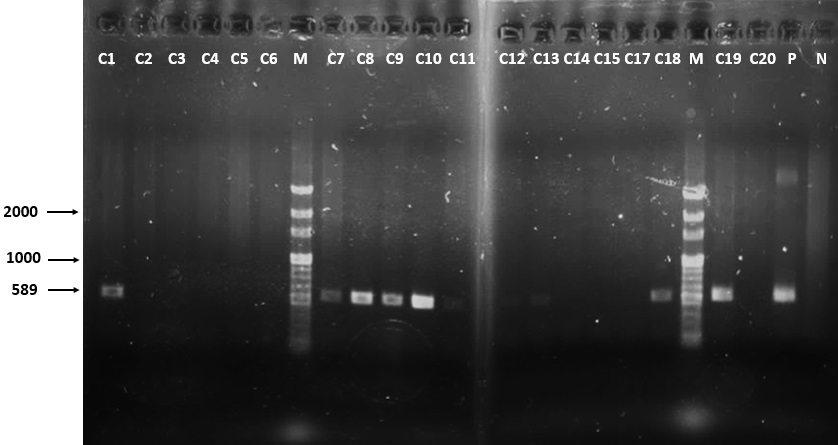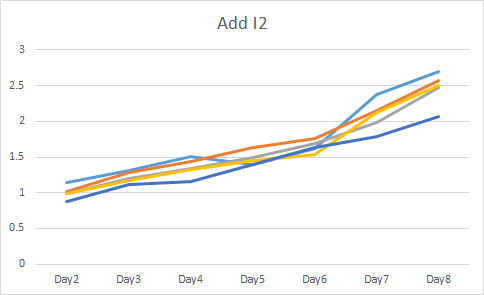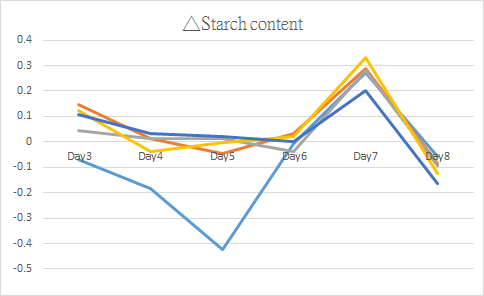Part:BBa_K2350022
pPIGBACK-PrbcL-CrtZ
Part description
Zeaxanthin belongs to carotenoid family and is widely found in the nature. It is also a natural color making corns, carrots and marigolds yellow. Moreover, zeaxanthin is an essential nutrient substance to human’s eyes, and some healthy supplements are made of it. Most of green plants produce zeaxanthin as an intermediate in carotenoid pathway. However, some cyanobacteria lack some genes and cannot produce zeaxanthin, such as Synechococcus elongatus PCC 7942. PCC7942 lacks only one gene making zeaxanthin, that is beta-carotene hydroxylase (CrtZ). To make Synechococcus elongatus PCC 7942 produce zeaxanthin, we construct a plasmid BBa_K2320022 under the control of PrbcL. After the expression of CrtZ, PCC 7942 can then be yellow.
And the crtZ what we use was a part released in iGEM (BBa_I742158) .We have successfully construct this part on our special design backbone pPIGBACK so that it can express in our microalgae and result in yellow microalgae.
Details
1. We studied Professor Chuan-Hsiung Chang’s paper(Energy Environ. Sci., 2012, 5, 8318: Enhancing CO2 bio-mitigation by genetic engineering of cyanobacteria) and decided to construct pigment plasmid with the same promotor. The natural ribosome binding site is also referred to it.
2. The intrinsic promoter of Rubisco large subunit (PrbcL) can overexpress foreign genes in the cyanobacteria. Many plants’ protens in photosynthesis are under regulation of PrbcL. And the high activity to express foreign genes has been proven.
3. CrtZ from Pantoea ananatis is a coding sequence of igem released part (BBa_I742158). It can lead to zeaxanthin and astaxanthin. However, the wild type Synechococcus elongatus PCC 7942 lacks of it and cannot make zeaxanthin naturally.
Result
We used spectrophotometer to measure the absorbance of CrtZ and wild type at 400 to 700 nm. The outcome was that the OD value of CrtZ at 400 to 500 nm was higher than wild type. Not only this, the change of wavelength absorbance was at 400 to 500 nm, which was blue light. This indicated CrtZ absorbed blue light and reflected yellow light, so CrtZ was more yellow than wild type. The measurement matched what we saw intuitively.
The right one of Figure 1 is wild type Synechococcus elongatus PCC 7942, the left one was transformant with BBa_K2320022. Obviously, the left one was more yellow than the right one. It proved that CrtZ was successfully transformed to PCC7942 and lead to zeaxanthin. See Figure 1.
Figure 1
Figure 2 is pPIGBACK-CrtZ transformants electrophoresis result. C1~C20 represents the pPIGBACK-CrtZ transformant clone 1 to clone 20, and M represnets 1 kb marker. Transformation efficiency of pPIGBACK-CrtZ is 11.4 transformants per μg DNA, and correctness is 52% (10/19), which is quite efficient because the successful rate of gene double-crossingover homologous recombination is low. See Figure 2.
Figure 2
To test whether the photosynthetic efficiency of CrtZ is better than wild type, we then used iodine to measure starch concentration. First, the initial concentration of microalgae of CrtZ and wild type should be same, so that the measurement could be fair. We measured the OD value at 730 nm, which represented the concentration of microalgae. Then we calculated how much microalgae and BG11 (the medium) we should add to make same amount of microalgae in each plate. Second, we started to measure starch concentration. We measured the OD value of each plate at 730 nm, which represented the cell number. Then we added 50 μl iodine into each cuvette, waited for five minutes, and measured the OD value at 620 nm, which represented the starch content. We repeated this step for seven days. Here are our results.
Figure 3 is cell number, and Figure 4 is the starch content. See Figure 3 and Figure 4.
Figure 3
Figure 4
Figure 5 is starch content per cell, and Figure 6 is delta starch content compared with days. In Figure 6, the starch content change per cell of transformants are more than wild type, and proved that photosynthesis of some transformants were comparable to or more efficient than wild type. See Figure 5 and Figure 6.
Figure 5
Figure 6
Conclusion
With sufficient outcomes, CrtZ was surely transformed to PCC7942 and elevated the photosynthetic efficiency.
Discussion
1.The 2011 NCTU Formosa inspired us to transform photosynthetic pigments to cyanobacteria. NCTU Formosa used zeaxanthin synthesis pathway for temperature sensory. They used E.coli and we used Synechococcus elongatus PCC7942. Furthermore, we mainly concerned with the photosynthetic efficiency.
2.There are two yellow pigments in carotenoid pathway, zeaxanthin and lutein. The reason why we did not choose lutein was that PCC7942 lacked almost every gene on α-carotene pathway. Moreover, the only gene that PCC7942 lacks on zeaxanthin pathway is an IGEM released part. So we preferred zeaxanthin to lutein.
3. We can assume that all of cyanobacteria in the world are able to promote photosynthetic efficiency from our modeling. Maybe they can slow down the greenhouse effect.
pPIGBACK-PrbcL-CrtZ
- 10COMPATIBLE WITH RFC[10]
- 12COMPATIBLE WITH RFC[12]
- 21COMPATIBLE WITH RFC[21]
- 23COMPATIBLE WITH RFC[23]
- 25COMPATIBLE WITH RFC[25]
- 1000COMPATIBLE WITH RFC[1000]
| None |






